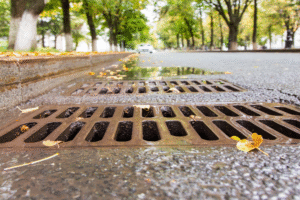
In the SEO world, backlinks are like votes of trust from other sites. They tell search engines that your content is valuable and worth ranking higher. But over time, some of those backlinks can disappear, maybe the linking page was deleted, the URL changed, or the site shut down. When that happens, you lose not just referral traffic but also valuable link equity.
That’s where link reclamation comes in. It’s the process of finding, fixing, and restoring backlinks that used to point to your website. Done right, it can help you recover lost authority and improve your search visibility without creating new content or begging for new links.
What Exactly Is SEO Link Reclamation?
Link reclamation is the practice of identifying backlinks that no longer work and bringing them back to life. Sometimes the links still exist but lead to a 404 page. Other times, your site gets mentioned without a clickable link; those are called unlinked mentions.
In both cases, you’re missing out on SEO value. Link reclamation helps fix that by tracking these opportunities and taking steps to recover them.
Common reasons backlinks go missing include:
- The page they linked to was deleted or moved.
- The site owner removed or changed the link.
- The linking website itself is no longer live.
With the right tools and consistent checks, you can easily find and fix these issues to regain lost authority.
Step-by-Step: How to Reclaim Your Lost Backlinks
Reclaiming links takes a mix of technical checks and outreach. Here’s a practical guide to help you do it properly.
1. Discover Lost or Broken Links
Start by identifying which backlinks are missing or broken. The best tools for this are:
- Google Search Console: It lists crawl errors, broken pages, and backlinks that no longer connect properly.
- Ahrefs Site Explorer: It gives a clear view of your backlink history and flags any lost links or referring pages.
- Majestic or Similar Tools: They can track your overall link profile and show mentions that don’t include a hyperlink.
Regularly running these scans helps you stay on top of link losses before they affect your SEO.
2. Check the Value of Each Lost Link
Not every broken link deserves your attention. Focus only on the links that matter most, usually the ones from high-authority or niche-relevant websites.
Ask yourself:
- Did this link send consistent referral traffic?
- Was it from a trusted and reputable site?
- Does it point to an important page on my website?
If the answer is yes, that’s a link worth reclaiming. Ignore spammy or low-quality links that won’t contribute real SEO value.
3. Fix or Replace the Problematic URLs
Once you’ve identified which links to recover, it’s time to fix the issue:
- Use a 301 Redirect: If the page on your site was moved or deleted, redirect the old URL to a new, relevant page. This transfers most of the link equity.
- Recreate Missing Pages: If a deleted page was attracting good backlinks, it’s often worth recreating it with updated content.
- Update Your Internal Links: Broken internal links can also hurt your SEO. Fixing them keeps both users and crawlers happy.
4. Contact Website Owners
Some lost links can’t be fixed on your end. In those cases, reach out to the site owner.
Keep your message short, polite, and professional.
Example:
“Hi [Name], I noticed that one of your articles used to link to my page [insert link], but it seems to be broken now. Here’s the updated URL you can replace it with. Thanks for keeping it live!”
This kind of outreach usually works well if you offer a quick, helpful fix.
5. Convert Unlinked Mentions into Links
One of the easiest wins in link reclamation is turning brand mentions into backlinks.
Sometimes other websites mention your brand, products, or content, but don’t add a hyperlink. That’s a lost opportunity.
You can use Google Alerts, Ahrefs Alerts, or Mention to find these brand references. Then, contact the publisher and ask if they could link the mention to your website. Most are happy to do it since it adds value for their readers.
Why Partnering with a Guest Posting Agency Helps
Reclaiming links can be time-consuming, especially if you’re managing a large website. This is where working with a guest posting agency can make a difference.
A good guest posting company doesn’t just build new backlinks; it also helps you monitor, maintain, and recover old ones. They use professional SEO tools to find broken or lost backlinks and reach out to webmasters on your behalf.
The best part? They can combine link reclamation with fresh outreach to strengthen your overall backlink profile. That’s how a complete guest posting solution helps you maintain long-term SEO growth while recovering lost authority.
Conclusion
Link reclamation isn’t about chasing new opportunities; it’s about restoring the value you already earned. Every recovered link adds back a small piece of trust, authority, and visibility to your website.
By auditing your backlink profile regularly, fixing broken links, and reclaiming lost mentions, you can maintain a strong SEO foundation without starting from zero.
Consistency is the key; the more you monitor your links, the stronger your domain authority becomes over time.
FAQs
- What causes backlinks to disappear?
Backlinks often vanish when the linking site changes its structure, deletes old pages, or removes your URL. Sometimes, your own site updates can also break existing links.
- How can I find which backlinks I’ve lost?
Use tools like Ahrefs, Google Search Console, or Majestic to track your backlink profile. These tools highlight broken or missing links so you can act quickly.
- Is it worth spending time on link reclamation?
Yes. Restoring old backlinks is easier and faster than building new ones. It helps you regain lost authority, rankings, and referral traffic with minimal effort.




